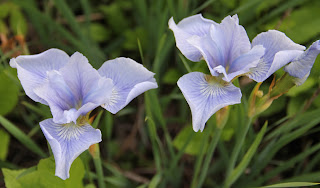I have always enjoyed Baroque music and Antonio Vivaldi the "Red Priest" my favorite baroque composer can be frequently heard among the flora.
Here is a list of some works I enjoy in the garden. I often lay on my back surrounded by the verge, turn vision skyward and open my mind to the music.
Chamber Concerto in G minor, (RV 107)
Concerto for Strings and Basso Continuo in D minor, (RV 128)
Trio for Violin, Lute & Cello in G minor, (RV 85)
Paris Concerto No. 5 Concerto for strings in C major, (RV 114)
Trio Sonata 'La Folia', (RV 63)
Nulla in mundo pax sincera, (RV 630)
Concerto in D major for mandolin, strings and harpsichord, (RV 93)
Concerto for 2 oboes, strings and basso continuo in C major, (RV 534)
Bassoon Concerto in E minor, (RV 484)


































